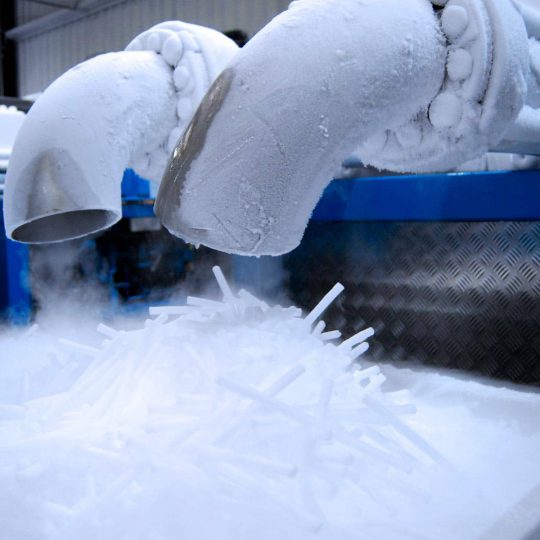Dry Ice Safety
Safety is our priority. Dry ice may be hazardous if incorrectly handled.
It’s important to know how to use dry ice safely:
Do not let skin come into contact with dry ice – always use heavy-duty gloves with a scoop or tongs.
While carbon dioxide gas is always present in the atmosphere, it is important to ensure good ventilation around dry ice transport and storage so that as carbon dioxide gas escapes it is kept at safe levels around you and others.
Application Safety: Blasting and More
When using dry ice in specialised applications such as cleaning or surface preparation, additional safety precautions are necessary. Methods like dry ice blasting involve high-velocity CO₂ pellets and require protective eyewear, gloves, and hearing protection to ensure user safety. These procedures must be conducted in well-ventilated areas to manage CO₂ buildup and avoid respiratory hazards. As with all uses of dry ice, following proper handling and equipment guidelines is critical to ensuring both personal and environmental safety.
Please read this essential information: Dry-Ice-Handling-Instructions

